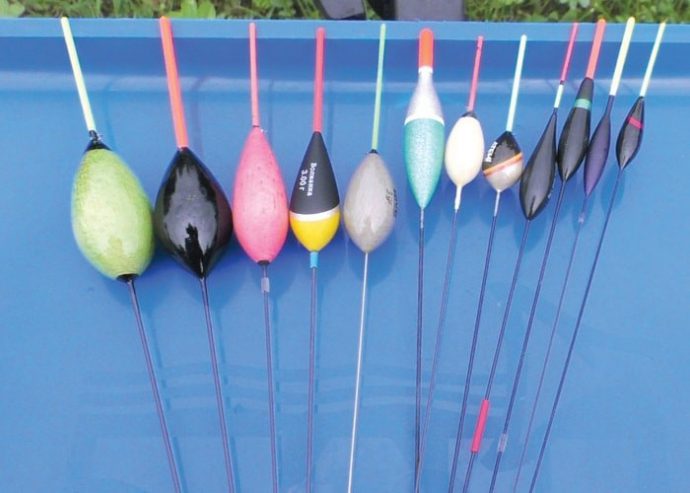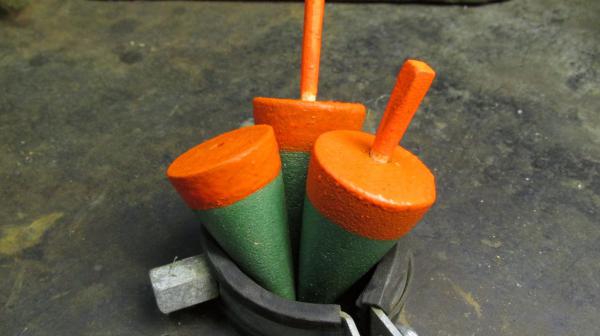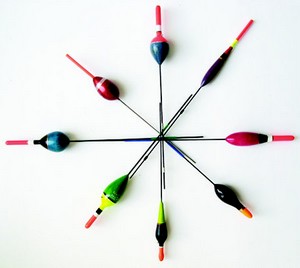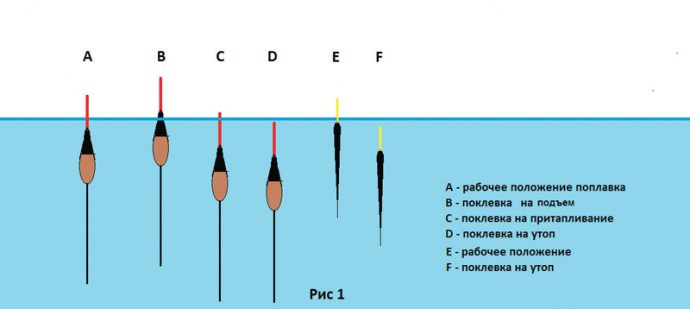Contents

Bream is a fish that many anglers “hunt” for. For catching it, such tackles as a feeder (donka) and an ordinary float fishing rod are used. This article will talk about how to catch bream on a float rod, or rather, how to choose the right float.
And although many believe that there are no difficulties in choosing a float, there are still some subtleties that can affect the outcome of fishing, in general. As you know, the float is selected depending on the conditions of fishing.
Float shape for bream
For bream fishing, you can choose any float, and he will successfully cope with his task. The most important thing is that its shape and colors do not reduce the level of comfort of the fishing itself, and also do not allow the slightest bite to go unnoticed. As a rule, in the arsenal of each fisherman there are several varieties of floats designed for different fishing conditions.
Feather float

These are the most sensitive floats, because they react to the slightest touch of the fish. It can really be used when fishing for bream, especially in calm, calm weather, when there is practically no unrest on the surface of the water. Despite this, the float has its drawbacks. It is also able to respond to wave vibrations, therefore, it is sometimes very difficult to identify bream bites in difficult conditions. As a rule, a feather-shaped float is ideal for bream fishing in still water.
Float in the form of a barrel, ball

This float is not so sensitive, but it is very stable. Perfectly identifies bites, in the presence of waves, especially if the bream takes the bait without hesitation. Therefore, such a float may be among the best options. It can be easily seen when it is laid out under the action of a bite, moreover, it never collapses on its side under the action of waves and wind. It can also be used in conditions where there is a current.
Short nib

Quite often used when fishing for bream at shallow depths. This is the same pen, but a little shorter. Such a float is less alarming for the fish, due to its small size. This is especially important when fishing in shallow water.
conical float

A float of this form is considered universal. A float of this shape will suit any fishing conditions: it can be used on still water and in current conditions, as well as in the presence of unrest. Sufficiently sensitive float for catching bream, so it is used by most anglers.
Float color selection
 The main emphasis should be placed on ensuring that it is clearly visible even at a considerable distance from the coast. Moreover, the color of the float should contribute to a faster reaction of the angler to bites. If the float is painted with multi-colored stripes and has a contrasting tip, then it is much easier to determine the position of the float on the surface of the water.
The main emphasis should be placed on ensuring that it is clearly visible even at a considerable distance from the coast. Moreover, the color of the float should contribute to a faster reaction of the angler to bites. If the float is painted with multi-colored stripes and has a contrasting tip, then it is much easier to determine the position of the float on the surface of the water.
As a rule, bream fishing is carried out at a considerable depth, almost at the very bottom, therefore, it does not really matter to him how the float is painted. And yet, in order not to alert the fish, it is better to abandon the bright colors of the float at the bottom. Usually, the lower part of the float has neutral coloring or coloring that resembles certain objects in the water.
Interesting to know! On a dark surface, floats with a pure white or pure light green top are more noticeable, and on light water – with a red or black top.
Correct float loading

It is not enough to choose the right float, it still needs to be loaded correctly so that it performs its functions. If this procedure is performed correctly, then the float will be able to feel the slightest bite of the fish. Loading is carried out using lead shots of a certain weight. This is a rather painstaking task and successful fishing for bream depends on it.
The correct loading of the float is characterized by the fact that its body is under water, and only its antenna rises above the water. Like a float in the shape of a barrel or cone, this barrel or cone should hide under water, and only a thin antenna should look out above the water. If you take a float in the form of a feather, then 2/3 of this float should be placed under water, and 1/3 should look out of the water.
Which float to choose depends both on the fishing conditions and on the preferences of the angler himself. A lot of anglers prefer a feather float, using goose or swan feathers for this. These are excellent floats, the most sensitive, especially when catching small fish, which have much less effort than bream. In addition, a light float needs less weight, which makes the tackle very light, and this is not conducive to casting over longer distances. In this case, you need a heavier rig, so you have to resort to heavier floats. In general, the larger the fish that bite in a given pond, the larger the float needed. Still, the fish should feel at least some, but resistance. In addition, the angler should have a few seconds of time to strike. If the tackle for the fish is quite light, then the bite can be so fast and powerful that the angler simply will not be able to react to it in time. The consequences can be the most unpredictable.
Sliding Float on Bream. Mounting.
Do-it-yourself float for bream and crucian carp









